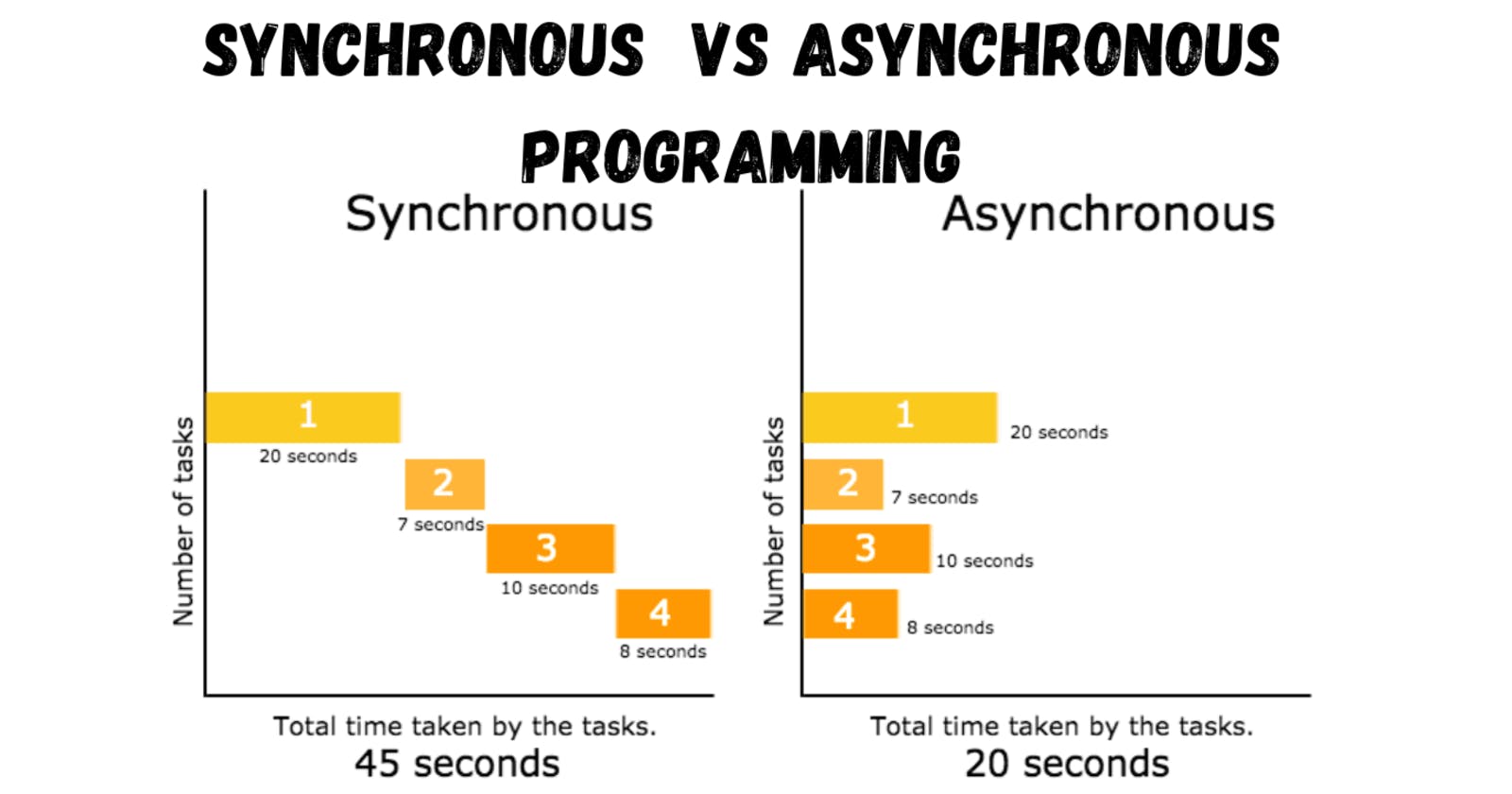Programming is an essential part of computer science. The way code is executed in programming is very intriguing. In programming, there are two ways in which code can be executed - Synchronously and Asynchronously. In this blog, we will explore what synchronous programming means and what asynchronous programming means. We will also compare both and explore in detail how they work and their benefits.
What is Synchronous Programming?
Synchronous programming is a type of programming that involves the execution of code one after the other, in a sequential manner. This means that in synchronous programming, code executes in a blocking way. When a program executes an operation, it blocks the execution of further code or operations until the current operation is completed.
To understand this better, let’s take an example of synchronous programming in JavaScript:
function operationOne() {
console.log("Operation one starting...");
console.log("Operation one completed...");
}
function operationTwo() {
console.log("Operation two starting...");
console.log("Operation two completed...");
}
function main() {
operationOne();
operationTwo();
}
main();
In the above example, we have three functions. The main function invokes two other functions sequentially - operationOne() and operationTwo(). The output of this code will execute in the following sequence:
Operation one starting...
Operation one completed...
Operation two starting...
Operation two completed...
As we can see, the operation two function is called only after the first operation, one has been executed. This is how synchronous programming executes code.
What is Asynchronous Programming?
Asynchronous programming is a type of programming that executes code simultaneously. In asynchronous programming, the execution of code continues while different processes are executing simultaneously. This means that it doesn’t block the execution of the program while waiting for the current operation to complete.
To understand this better, let’s take an example of asynchronous programming in Dart:
import 'dart:async';
Future<String> operationOne() async {
print("Operation one starting...");
await Future.delayed(Duration(seconds: 3));
return "Operation one completed...";
}
Future<String> operationTwo() async {
print("Operation two starting...");
await Future.delayed(Duration(seconds: 1));
return "Operation two completed...";
}
void main() async {
final result = await Future.wait([operationOne(), operationTwo()]);
print(result);
}
In the above example, we have two functions - operationOne() and operationTwo(). Both these functions return a future, which is a representation of a value that may not be available yet. In the main() function, we are waiting for the completion of operationOne() and operationTwo() using the Future.wait() method.
When we execute this code, the following output will be displayed:
Operation two starting...
Operation one starting...
Operation two completed...
Operation one completed...
As we can see, both function calls are made simultaneously, and the operations complete respectively regardless of the order in which they were started. This is how asynchronous programming executes code.
Synchronous vs. Asynchronous Programming
Synchronous and asynchronous programming have distinct differences in terms of the way they execute code. Some of the differences between the two are:
Execution
Synchronous programming executes code one after another, in a sequence, whereas asynchronous programming enables the execution of code simultaneously.
Blocking
Synchronous programming blocks the execution of the program while waiting for the current operation to complete, whereas asynchronous programming doesn’t block the program execution while waiting for the completion of the current operation.
Waiting
Synchronous programming waits for the current operation to complete before executing the next operation, whereas asynchronous programming immediately starts executing the next operation and completes the current operation in the background.
Resources
Synchronous programming requires a lot of resources because the program execution is blocked until the current operation is completed. On the other hand, Asynchronous programming doesn’t require a lot of resources since the program execution isn’t blocked.
When to Use Synchronous Programming?
Synchronous programming should be used when the code requires immediate completion of a task before moving on to the next task. Asynchronous programming can be used in cases where the program execution won’t be blocked in order to run another operation.
For example, a button click event will use a synchronous program, because it needs to be executed immediately. On the other hand, fetching user data from a database can be used with asynchronous programming because it doesn’t necessarily have to be executed immediately.
When to Use Asynchronous Programming?
Asynchronous programming should be used when the code requires to execute multiple operations simultaneously. This programming paradigm is ideal where the code has to wait for I/O intensive tasks such as network calls, database operations, and file reads and writes.
For example, asynchronous programming can be used for a web page that is loading images and video from the server simultaneously. This way, the web page will load faster.
Advantages of Asynchronous Programming
Asynchronous programming has many advantages, which include:
Scalability
Asynchronous programming allows for the execution of multiple tasks simultaneously, thereby improving program performance and scalability.
Improved Speed
Asynchronous programming can execute more code in less time since it doesn’t have to wait for the completion of a current task before starting a new one.
Lower Resource Consumption
Asynchronous programming is more efficient in terms of resource consumption since it doesn’t require the blocking of the program execution for the completion of a task.
Better User Experience
Asynchronous programming can provide a better user experience since it can execute multiple tasks simultaneously, resulting in faster loading times and improved overall performance.
Flexibility
Asynchronous programming is very flexible since it can execute different tasks simultaneously, and it can be applied to different programming languages.
Conclusion
Synchronous programming and asynchronous programming are essential concepts in programming. Both have distinct differences, advantages, and disadvantages. Each has its use cases. Developers need to be selective when choosing which programming paradigm to use based on specific programming requirements. It is important that developers understand the pros and cons of each type of programming in order to develop efficient and high-performance systems.
